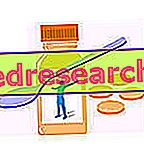Related articles: Childhood Cerebral Palsy
Definition
Infantile cerebral palsy is a disorder that results from malformations occurring in the prenatal period (before birth) or from perinatal or postnatal injuries (during or after childbirth), affecting the central nervous system. This condition usually occurs before the age of 5 years.
The etiology of infantile cerebral palsy is multifactorial and it is often difficult to establish a specific cause. Usually, prenatal factors (maternal infections during pregnancy, congenital brain anomalies, genetic / chromosomal defects, prematurity, neonatal encephalopathy and nuclear jaundice) and perinatal (eg intra-birth asphyxia, hypoxic-ischemic phenomena and infections) contribute to the development of the disease. of the central nervous system). Serious cerebral traumas or systemic disorders (such as stroke, prolonged cardiocirculatory arrest, meningitis and sepsis), which occurred during early childhood, can also cause cerebral palsy.
Most common symptoms and signs *
- athetosis
- Korea
- Difficulty concentrating
- Language difficulties
- Dysarthria
- Dysphagia
- Hip dysplasia
- Articolar pains
- Hemiplegia
- Joint swelling
- hyperkyphosis
- hyperreflexia
- Hypertonia
- Hearing loss
- Ophthalmoplegia
- Paraplegia
- Loss of coordination of movements
- Narrowing of the visual field
- Reduced vision
- Joint stiffness
- Growth delay
- Mental delay
- Scoliosis
- Tetraplegia
- Tremors
- xanthomas
Further indications
Infant cerebral palsy is characterized by disorders of voluntary motility or posture, ataxia and non-progressive spasticity.
Depending on which part of the central nervous system is malformed or damaged, different neurological patterns can develop:
- Spastic forms : they occur in more than 70% of cases; spasticity is a state of resistance to passive movement, due to the involvement of the upper motor neuron (or first upper motor neuron). This condition can affect motor function in a variable way. Spastic forms of infantile cerebral palsy can involve hemiplegia (motor control disorder of a body's emilate), tetraplegia (motor control disorder of the trunk and the four limbs) or diplegia (motor limb disorder of two limbs). Usually, osteotendinous reflexes are accentuated, muscles are hypertonic and voluntary movements are insufficient and poorly coordinated. Furthermore, tendon retractions develop and the joints can become misaligned; tip walking is typical.
- Atetosic or dyskinetic forms : they derive from damage to the basal ganglia, which occurs in about 20% of cases. These forms of infantile cerebral palsy are characterized by involuntary and slow torsional movements that affect the extremities of the limbs and the trunk (atetosis), often activated by excitement and emotional tension. Abrupt, distal movements (chorea) may also be present.
- Ataxic forms : they are due to an alteration of the cerebellum or its connections. Muscle weakness, poor coordination and tremor cause instability and difficulty in performing rapid or fine movements.
- Mixed forms : the symptomatology results from the combination of two or more forms of infantile cerebral palsy.
Before a typical neurological pattern develops, early symptoms include hyperreflexia and altered muscle tone.

Mother with Child affected by Childhood Cerebral Palsy
Other manifestations that can be associated with infantile cerebral palsy include sensorineural deafness, gaze paralysis, strabismus and other visual deficits. Many children with hemiplegia or spastic paraplegia have normal intelligence, while those with spastic tetraplegia and mixed forms can present a serious intellectual disability. In some cases, dysarthria and dysphagia are present.
The diagnosis involves performing an MRI scan of the brain. Infrequently, infantile cerebral palsies can be diagnosed with certainty during early infancy and, often, specific forms are not manifested before the 2 years of life. Children considered high risk should be monitored with careful follow-up.
Usually, treatment of infantile cerebral palsy involves physiotherapy and occupational therapy to strengthen muscles and facilitate movement. To manage spasticity are used orthoses, drugs (such as intrathecal baclofen, benzodiazepines, tizanidine and dantrolene) and orthopedic surgery (eg tenotomy and dorsal rhizotomy). Often, speech therapy and various aids are needed to facilitate communication and increase mobility. Severe impairments of sucking and swallowing may require gastrostomy nutrition.
Many children with cerebral palsy survive into adulthood and, with appropriate treatments, manage to lead an almost normal life.



